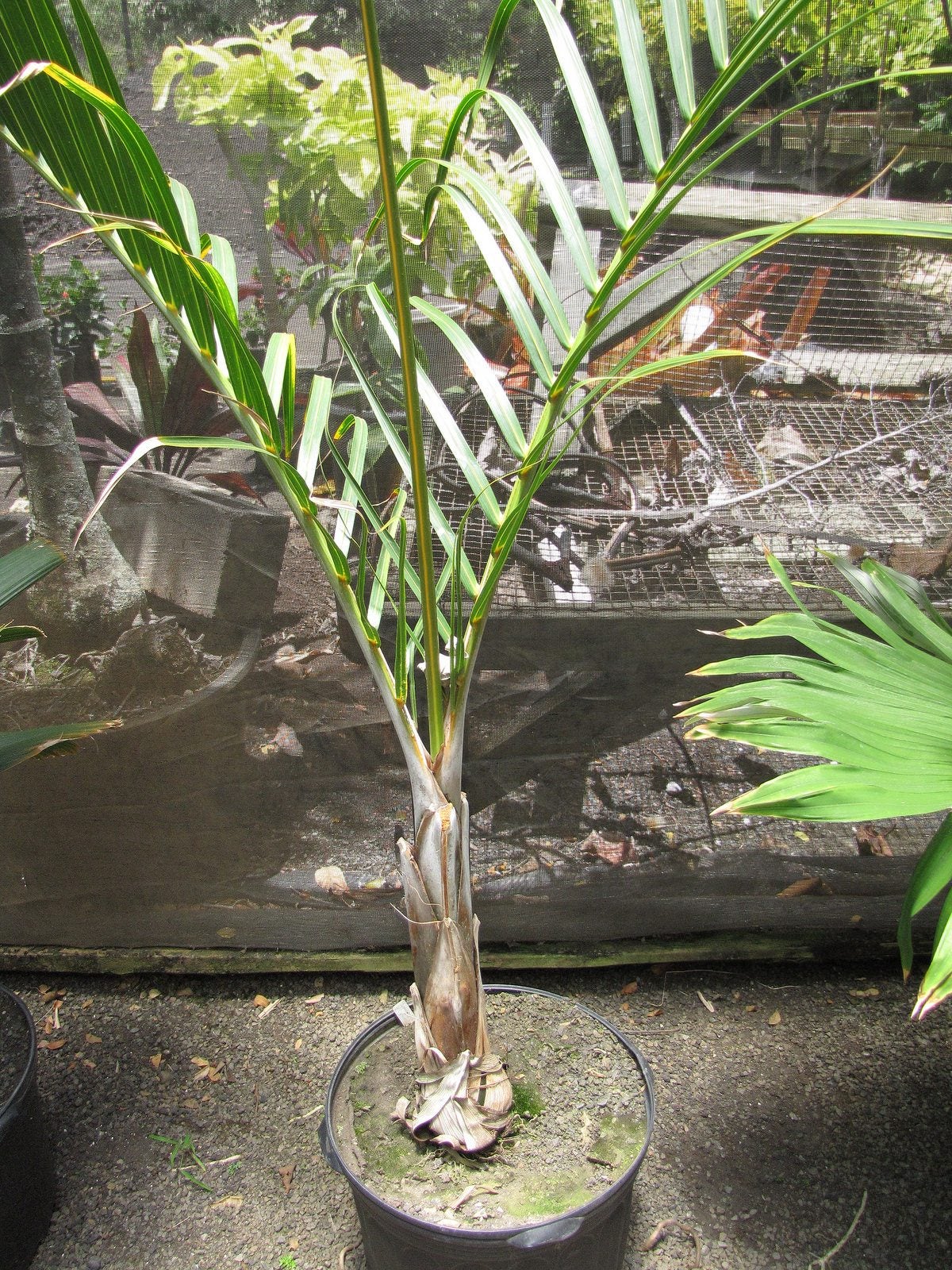Palm Tree Houseplants – Tips On Growing Spindle Palm Indoors


Indoor palm trees add an elegant and exotic feel to the home interior. Growing spindle palm indoors is a treat for northern gardeners who usually can't grow tropical foliage in the garden. Palm tree houseplants are a great way to grow these warm weather beauties in a more diminutive form than the classic boulevard palms, which can exceed 25 feet (8 m.) in height. The more manageable potted palm still has all the class and glamour of its in-ground siblings with space saving sensibility.
Spindle Palm Houseplant
Spindle palm trees are fairly common indoor plants. The tree is endemic to the Mascarene Islands near Madagascar where it thrives in dry, sandy soil. It is only hardy in USDA zone 11, but it makes an excellent indoor tree, and its growth is slow enough to make it perfect for a container. There are a few things to know about growing spindle palm inside, most importantly, the amount of water this pretty palm should receive. In their native environment, spindle palms reach 20 to 25 feet (6-8 m.) in height and can grow 6 to 10 foot (2-3 m.) long fronds. The leaves are made up of numerous leaflets, lending the plant a lacy foliage appearance. Notably, this palm has a spindle-shaped stem that widens slightly above the base and then constricts near the crown. The effect is unique and appealing, also decorated with a ringed pattern along the trunk. When planted in a container, the tree will grow slowly and remain relatively short in stature. Indoor trees usually attain a height of 6 feet (2 m.) at maturity. Palm tree houseplants are useful in bright light situations, such as a foyer or brightly lit dining room. Try using a spindle palm houseplant in a sunroom for a tropical feel.
Indoor Care for Spindle Palms
One of the best things about the spindle palm houseplant is its easy maintenance. The plant does best in full sun but can tolerate lower lighting. The temperature range for this plant is 35 to 80 degrees F. (1-26 C.). A spindle palm indoors requires consistent moisture but a well-draining planting medium to prevent sogginess. The addition of a little gritty material, such as sand, will enhance drainage and provide loose soil for the best root growth. Water deeply when the soil is halfway dry. Watch for pests such as mealybugs and scale. Combat these with alcohol wipes. Occasionally, the plant will shed old leaves. When leaves turn brown, prune them off if you are impatient for the palm to shed the dead foliage on its own. Like all plants, palms, especially those in containers, need supplemental nutrients. A spindle palm indoors will have to rely on its potting soil to provide some of these nutrients. Repot the plant every two years when the soil is depleted, and roots become bound. Spindle palms are prone to potassium deficiency. Use a palm food with both magnesium and potassium. Fertilize every two to three months during the plant's active growing period. Suspend feeding in winter. Water the plant food in well to prevent salt buildup in the soil. Indoor care for spindle palms is very straightforward and they are not terribly fussy trees. Enjoy the statuesque palm in almost any indoor setting and bring it outdoors in summer for a little fresh air and sunshine.
Gardening tips, videos, info and more delivered right to your inbox!
Sign up for the Gardening Know How newsletter today and receive a free copy of our e-book "How to Grow Delicious Tomatoes".

Bonnie Grant is a professional landscaper with a Certification in Urban Gardening. She has been gardening and writing for 15 years. A former professional chef, she has a passion for edible landscaping.
-
 Moody Blooms For Spring: 8 Types Of Black Flowers To Add Drama To Spring Displays
Moody Blooms For Spring: 8 Types Of Black Flowers To Add Drama To Spring DisplaysFrom midnight burgundies to inky violets, several types of black flowers can enrich and embolden a spring display. Try these brooding bloomers for a moody garden
By Tonya Barnett
-
 Can Snake Plants Live Outside? Everything You Need To Know For Snake Plants Al Fresco
Can Snake Plants Live Outside? Everything You Need To Know For Snake Plants Al FrescoSnake plants can live outside given the right conditions, but be careful that they don't take over! Learn the best way to use snake plants in your landscape.
By Mary Ellen Ellis
